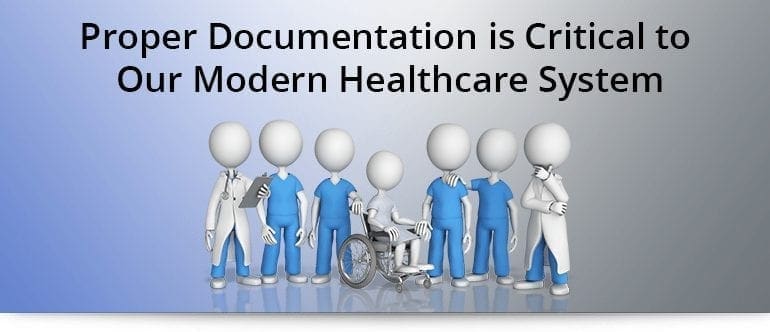Call us toll-free: 800-878-7828 — Monday - Friday — 8AM - 5PM EST

Article by Allen Frady, RN, BSN, CCS, CCDS, CRC. This article was originally published on the Journal of AHIMA on March 29, 2018 and is republished here with permission.
Is documentation improvement and proper use of ICD-10-CM critical to the nation’s healthcare debate? I say definitively yes, in every way. The bulk of the information coming from the Centers for Medicare and Medicaid Services (CMS) via the Federal Register and a large part of policy decision-making about the shifting paradigm towards pay-for-performance revolves around one single data point—the ICD-10-CM codes. These codes are being selected at the inpatient, outpatient, and ambulatory surgical levels and drive 100 percent of our data in terms of what is making America sick, which patients are getting better, outcome locations, and successful treatment plans. They are also used to track the cost of various illnesses in numerous patient populations. These are the same ICD-10-CM codes that give us our profiling and outcomes, our value-based purchasing, MACRA/MIPS, MS-DRGs, APCs, HCC levels, and even the continued payment of FFS claims.
For the coding system to work correctly you must first start with proper documentation and ensure you have expert coders at the ready. Proper documentation must start with physician buy-in and appropriate physician education.
Physician education for proper documentation and coding sounds ominous—maybe even impossible—but it doesn’t have to be. I typically focus provider education on letting them know what’s being lost in translation. If you have a willing physician who is ready to listen, you can quickly gain their attention with a few very simple questions like the ones listed below:
- “Did you know flash pulmonary edema gets reported as chronic pulmonary edema?”
- “Did you know healthcare associated pneumonia gets reported with the same pneumonia code as community acquired pneumonia (and with the same cost and outcomes expectations)?”
- “Did you know if you document blood loss anemia in a patient with a 4gm loss in hgb who received two units of blood and endoscopic procedure for control of hemorrhage, the ICD-10-CM code that gets assigned is for chronic blood loss anemia?”
Documentation improvement is the mechanism by which these issues are fixed before they get into the healthcare data. Generally, we start with the ICD-10-CM code to figure out what is being reported and then work backwards. An example of this might be in discussing the pitfalls of using delirium and encephalopathy interchangeably. There is no shortage of these types of problems such as Renal insufficiency vs. Acute kidney Injury vs. Acute renal failure to SIRS vs. Sepsis, and even Respiratory Insufficiency vs Respiratory Failure. Sometimes the meaning of the ICD-10-CM code will drive the conversation with the provider, in favor of altering the written nomenclature, so that the data will accurately match the true clinical presentation as opposed to potentially getting false data.
While clinical documentation improvement (CDI) professionals do not get into the business of dictating clinical criteria to establish a diagnosis to medical staff. We will work with physician advisors and their extended physician champions to further the conversation about the documentation of the patient’s clinical picture in a way that represents their true pathological status in defense of the trend towards “clinical validation.” If the conversation with a physician is criteria-based, then I tend to take a collaborative tone, jointly discussing the pros and cons of various criteria (e.g. 3rd Univ Def of an MI, Sep 3, KDIGO, Aspen or how many mm of a shift on a head CT constitutes clinical significance) with focus on helping the physician understand how they may want to set the query parameters for CDI professionals at their facility. The comfort levels of the providers with various criteria thresholds for reporting varies depending on the level of the facility (academic teaching versus community) and the specific training the physician advisors received in medical school and in their residency. More importantly, their comfort thresholds with criteria-based decision making will vary depending on the patient. For example, sepsis indicators in an immunocompromised cancer patient look very different than sepsis indicators in a health 25-year-old athlete. CDI professionals routinely work with physician champions to make sure documentation accurately reports the severity of illness with a facilities patient population, leaving no stone unturned and no important data left off the claim form. This means that the CMS statistical data pool, which is often used for helping determine public health policy via CMS and the Federal Register will be accurate to the highest extent possible.
There is an important caveat for those looking to build a successful CDI program: strong administrative support is essential. An emphasis on getting documentation right must come from the top-down, from CMS all the way down to the provider, CDI professional, and, finally, to the coding professional. To get documentation right, it is crucial for the physician to have an open mind and be ready to learn.
